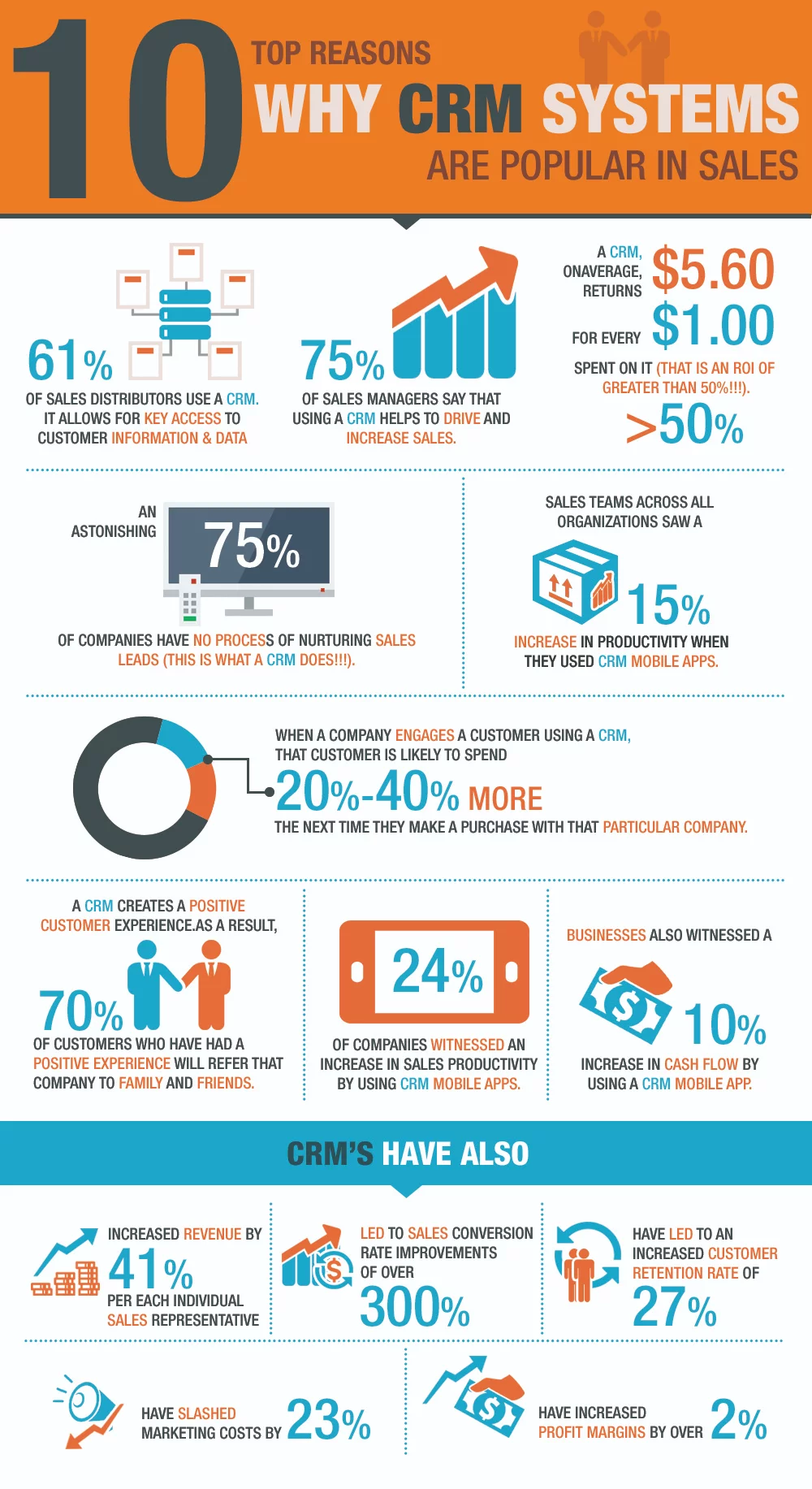
Customers are everything when it comes to business, especially considering it’s the consumer that drives growth and ultimately determines success.
It is for this reason customer satisfaction becomes a number one priority. Protect your number one business asset, while establishing a firm change management business identity.
Your customers will offer valuable feedback you can use to develop new concepts. They’ll drive revenue, so it’s important you cultivate a relationship that goes beyond appreciating them.
Being an elite, customer facing company means understanding your consumer. This can be facilitated using a CRM, but what exactly is a CRM and how can you benefit from using one?
What is a CRM?
A Customer Relationship Management (CRM) system is leveraged to help companies manage customer data. It supports various business functions, and can integrate with modern technology to provide an interactive customer experience.
Source image: Hubspot
Ultimately, a CRM will enhance team communication and business operations in general. When companies can prioritize the information they collect, customers will benefit from a seamless experience.
Managing customer data in an organized fashion is critical in today’s ever-changing business climate. Appeasing consumers is a weekly battle, one which is subject to diverse, evolving circumstances.
Fortunately, using a CRM like Salesforce goes a long way, especially when managing the radical nature of change. Once your company is up to speed with the Salesforce package, you can work through a salesforce change management strategy.
A CRM is one of many tools and techniques you can use to further your aspirations.
But how exactly should you devise a salesforce change management program?
Implementing a Salesforce Change Management Program
When implementing a CRM change management program, you should follow some basic principles and guidelines if you’re to achieve your objectives:
OCM Expertise
A great way to start your salesforce change management strategy is with OCM expertise. If you can’t cultivate one internally there’s nothing wrong with seeking external help.
In fact, sometimes an expert outsider is great for providing an objective point of view, free from bias. An OCM expert will evaluate company culture, utilizing staff feedback where possible to form a detailed point of view.
They will consequently develop a change management strategy, which involves promoting the case for change and supporting it with data and promising expectations.
They will leverage the tools and methods necessary to make things work, while implementing a change hierarchy and defining clear roles and responsibilities.
Clear Vision
Change is usually associated with uncertainty, but this can be reduced with clear planning and strategizing. Employees are more likely to welcome change if it’s introduced with a clear direction.
Otherwise, employees can experience greater anxiety when change is introduced with reckless abandon. This disconnect is more likely to generate feelings of dejection, creating an environment of resistance rather than embrace.
It is the responsibility of management to create an open dialogue, where change objectives align with top business priorities. The vision should be tailored to different groups, accounting for individual circumstances.
Milestones are great for helping staff establish an end goal, to reinforce positive behavior, and to keep staff motivated and on track. It’s reassuring when someone confirms you’re heading in the right direction.
Change Readiness
How ready and willing are your staff to change? Most staff will have settled into the status quo, where they confide and take comfort.
If change is introduced and staff aren’t ready to embrace it, your initiatives can fall on deaf ears. That’s why it’s best to conduct a survey, to gain an enhanced perspective on things.
This will help you establish a baseline measurement, from which you can determine a baseline measurement for success factors.
You’ll identify resistance groups, and be prepared to respond accordingly. By understanding where issues lie, you can implement safeguards to reduce their negative impact.
To sway staff opinion, it’s important you make a solid case for change. This includes communicating the benefits, while warning staff of the ramifications of not changing.
You can also engage your team with some fun games and activities!
Empathy can provide meaningful insight, where you can tailor your change plan based on staff opinion and feelings. By understanding your employee’s mindset, you can forge a more personal experience.
You’ll also appreciate the time it takes for employees to transition, where everyone will adapt at their own pace. The organizational culture should be respected, but with a progressive approach to advancing the culture.
Communication
Change often fails because it isn’t communicated properly organization-wide. Staff have a tendency to rebel against new procedures, especially when they feel excluded and oblivious to what’s happening.
That’s why it’s necessary to involve staff early and often. A communication plan is a great way to get your point across, while creating a two-way dialogue where staff can voice their disputes and concerns.
Leaders . . . Are you leaving your implementation teams in the dark? Here’s how to stop! https://t.co/Ubt7c8Zgbr… #results #implementation #success
— Brainzooming Group (@Brainzooming) September 30, 2018
Acceptance begins when staff are proactively a part of change. Otherwise progress can be slowed considerably. Employee engagement will dispel misconceptions, with communication that helps create stepping stones on a journey to adoption.
Your communication plan will outline what will be communicated, to whom, when, with what, and the resulting outcome of doing so.
Using a combination of methods and cadences is a great way to supplement your technical procedures. This should prioritize satisfying stakeholders, while importantly sharing your vision and gathering vital feedback.
WalkMe Team
WalkMe spearheaded the Digital Adoption Platform (DAP) for associations to use the maximum capacity of their advanced resources. Utilizing man-made consciousness, AI, and context-oriented direction, WalkMe adds a powerful UI layer to raise the computerized proficiency, everything being equal.




